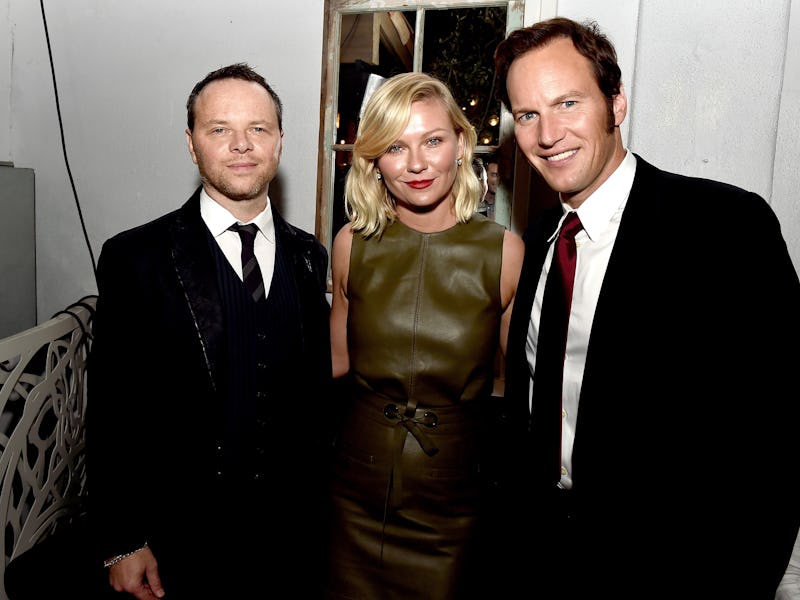Analyzing Noah Hawley's 'Fargo' Season 3 Revelations
Back to the present, with selfies, new style experiments, and maybe the return of the last Gerhardt standing.

Recent comments from Fargo creator Noah Hawley in a press conference have upheld some loose predictions we made here at Inverse about the show’s third season — set to air in the spring of 2017 — and contradicted others.
We knew from previous intimations that it was to be set in the present day, and now the writer and director have offered some revelatory comments about the inspiration for that choice.
Here’s Hawley’s leadoff about the basic conceit:
“It’s a more contemporary story, and I think that’s exciting. Our first year was set in 2006, but we didn’t really deal with what it was like to be in that region in a more contemporary world. I like the idea that we’re now living in a very selfie-oriented culture where people photograph what they’re eating and put it up for other people to see. It feels like a social dynamic that is very antithetical to the Lutheran pragmatism of the region. So many of our crime stories are based on the difficulty that people have expressing themselves and communicating… I like the idea of setting up these pragmatic and humble people against the culture of narcissism and [seeing] what that generates for us, story-wise.”
You may cringe at “selfie-oriented culture,” but it seems like this could be an interesting challenge for Hawley, both plot-wise and thematically. Technology went essentially unexplored in Fargo’s first, 2006-set season. Examining the weird way it is disseminated in small towns like Luverne and Fargo could be a recipe for humor and outlandish situations, as well as heady, Hawley-esque critique.
Lou Solverson (Patrick Wilson), Fargo, Season 2
The more surprising tidbit Hawley has confirmed is that no characters from Season 1 will return. He explains:
“The risk we take, obviously, is that we say at the beginning it’s a true story. It’s what Joel and Ethan Coen did in the movie, and what made the movie so powerful and poignant is that it ended. The danger of bringing them back and putting them through their paces for another crazy case [is] the artifice of the whole thing becomes too clear. That’s not to say one of our stories might not intersect with characters we’ve seen before for a certain period of time.”
Hawley’s devotion to his facetious true-crime conceit is charming. It seems like keeping the shared delusion is going is important for him as a creative limitation — to keep himself from getting too indulgent as a writer. In this light, it seems like a very prudent decision.
He doesn’t rule out glimpses of Season 2 faces, however, and the allusion to the possible “intersect[ion]” leaves this in the realm of very possible possibility. In the interview, the issue of the survival of Charlie Gerhardt is brought up, a character who seems like a likely candidate for reappearance. Hawley seems to have a future in mind for Charlie:
“I think he served about four years in prison and got out as the sole surviving Gerhardt and had to make a life for himself. On a lot of levels, he’s left behind as the last man standing of the Gerhardt family.”
Here’s hoping for a meaningful side appearance. Charlie was one of Season 2’s most interesting characters, but his capture almost felt like a rude interruption to a promising arc.
Hawley also confirms the suspicion that no set clues for Season 3’s conceit are embedded in Season 2, as they were in the show’s first season for Season 2: Lou Solverson the older’s (Keith Carradine) frequently refers to the “Sioux Falls massacre” which made him lose his faith in the inherent goodness of humanity, or at least see a part of it he can never unsee.
Here’s Hawley:
*“We didn’t really tee up the story of Season Three within the body of Season Two…. In the third year, the question becomes, structurally and stylistically, what’s left to say, what do we do that feels similar but is different so we’re not repeating ourselves? That said, we’re always looking for connections and things that fit into the larger body of work that we’re building. “
The “structurally and stylistically” qualification offers a bit of interesting insight into Hawley’s thinking, which makes sense with the increasingly wacky and adventurous filmmaking techniques and plot structure he indulged in during Season 2. Here’s hoping he can find some similarly fun and dramatically effective new mechanisms for the 2017 season.
You may be worried, but I’m not. Hawley’s done no wrong yet in this show, though he’s not afraid to take risks.